ご挨拶
私のプロフィールをお読み頂ければおわかりいただけるかと思いますが、私は約40年間自動車メーカーのデザイナーでありその約半分の20年間を米国のデザインスタジオで過ごしました。
しかし、現役をリタイアした私には、カーデザイン界の”FRESH”な情報は難しいので、これから数回に分けてこのコラムでカーデザイン界の歴史的変遷と私がカーデザイナーになった経緯を書いてみたいと思っています。これから自動車業界やプロダクトデザインの世界に羽ばたこうとする読者の皆さんの参考になれば幸いです。
Vol.1カースタイリングの始まり
シリーズ1回目は、米国で出現したテールフィンがカーデザイン界に与えた影響について。
自動車の起源については諸説ありますが、量産の自動車としては1908年式のT型フォードが始まりと言えるでしょう。
それでは、カースタイリングの起源はどこにあるのか? もちろんこれも諸説あるでしょうが、自動車メーカーが量産車を作るにあたり、その企画から設計に至る段階で、どの様なサイズでどのような形のクルマにするかを決定することがカースタイリングであるとするならば、そのシステムを最初に確立したのは1950年代後半から60年代にかけての米国の”BIG-3″であったと言えます。
大戦後、米国経済は徐々に回復し、広い国土や道路など自動車環境の充実した米国は、量産車が発展していくために最適の環境であったと言えます。50年代に入ると米国の工場での量産技術は確立され堅牢で耐久性のある形状のボディが生み出されていきます。
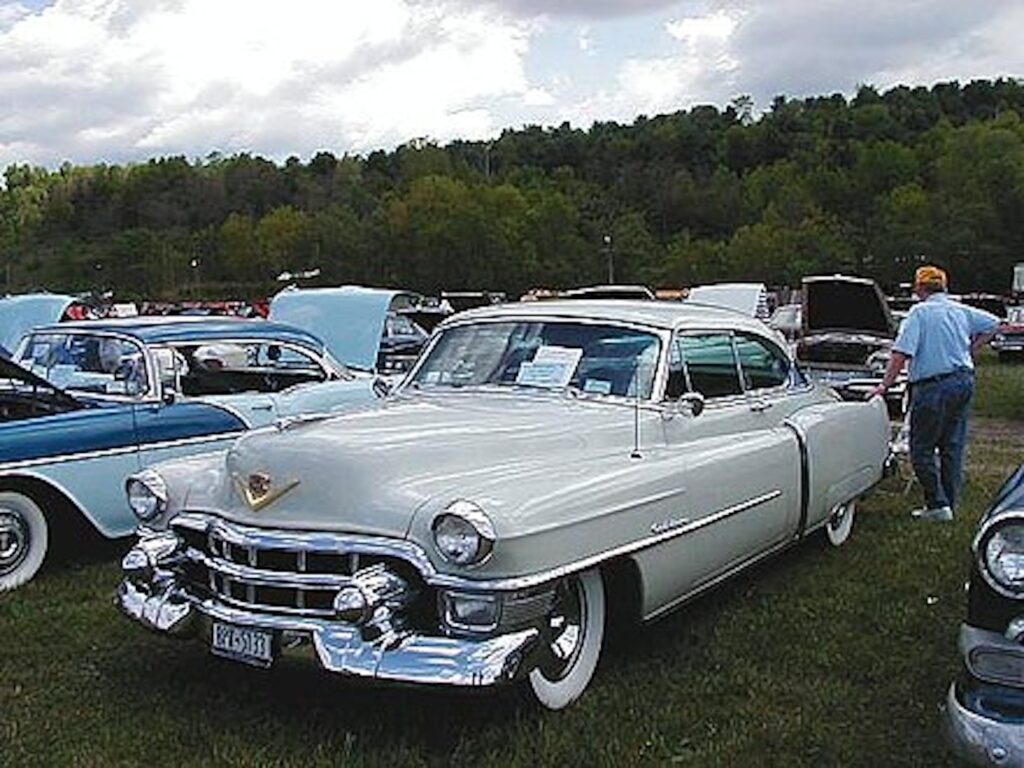

テールフィンの時代
そんななか、1951年GMは車のスタイリングで新たな価値を見出そうと一台のコンセプトカー Buick Lusableを発表します。このクルマのデザインエレメントはGMのみならず後年の米国車のスタイリングに大きな影響を及ぼしました。


当時のGMのデザインVP:HarleyEarlの説明によれば、米軍の航空機P38-Lightningの一対の垂直尾翼にヒントを得たテールフィンを車のスタイリングに取り入れたとの事。それは、空気抵抗の低減等、物理的効果ではなく、飛行機のように滑らかに道路上を滑空するというイメージをクルマの造形テーマにした”スタイリング”を行なった事が画期的でした。”テールフィン”こそが、カースタイリングの最初の一歩と言えるデザインテーマでした。そして、量産車としてそのテールフィンの代名詞と言えるのが、1959年式のGMのCadillac Eldoradoでした。


同時期のFord、Chryslerのクルマもテールフィンを持つデザインになって行きます。
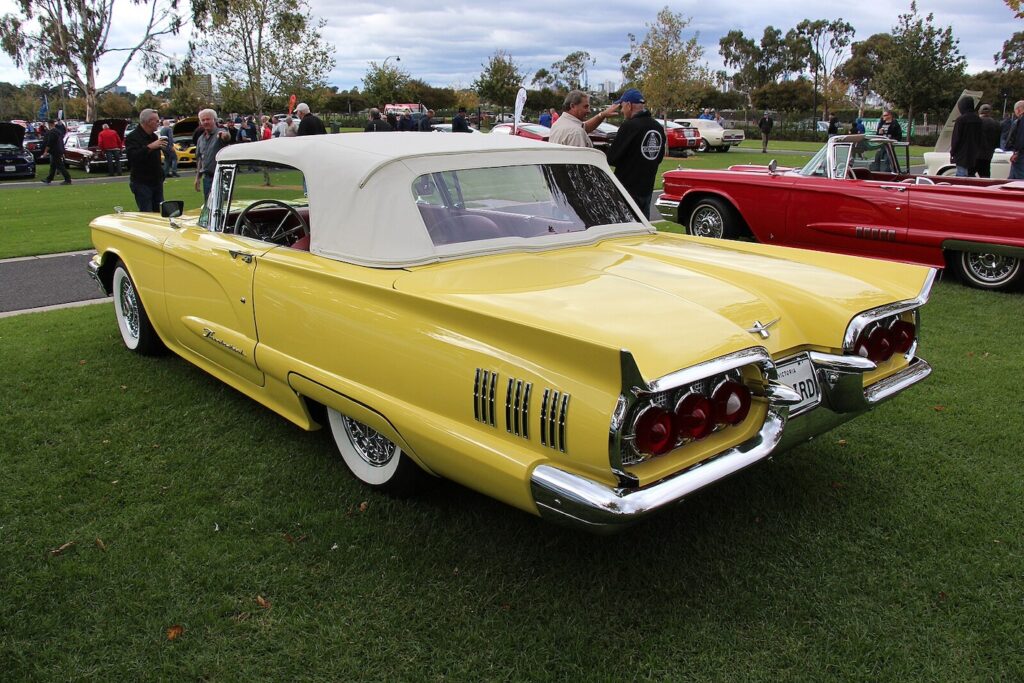

さらにテールフィンの発展形として、59年式Chevloret Imparaの特徴的なリヤ周りの形状はカースタイリング史に残る個性的で優美な造形と言えます。

50年代に米国車は欧州車に比べてかなり大型になっていますが、このテールフィンの時代に入って全長:5.7m、全幅:2.0m超とさらに長く幅広くなっていきます。これも米国のマーケットに適したデザイン要素でした。
1950~60年代の日本はモータリーゼーションの黎明期で、各家庭に自家用車があるという状態にはほど遠い時代でした。そして、非舗装路が舗装路よりはるかに多い時代でした。そんな道路事情もあって当時の日本車は全体的に小ぶりで、最大の乗用車クラウンでも全長:約4.4m、全幅:約1.7mとかなり小さいものでした。 それでも当時の米国車のデザインの流れに大きく影響を受けた物が有ります。
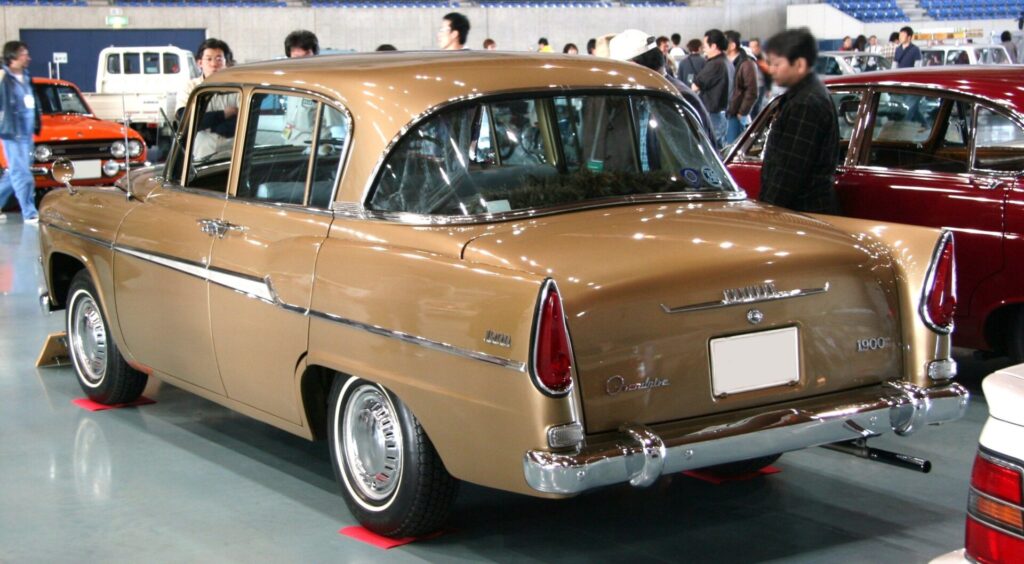


その小さな国産車達のなかにあって極稀に街で見かける米国車、Cadillac や Thunderbirdのスタイリングとプレゼンスは、まだ10歳位だった私に与えたインパクトは計り知れないものでした。
自動車の大量生産と言う点では米国より先行した欧州であり、そのボディデザインは各社のブランドイメージを軸とした、堅実な路線をとって来ましたが、1950~60年代にテールフィンと無縁であったか?と言うと決してそうでは無く、あのメルセデスでさえも控えめにテールフィンをそのデザインに取り入れていました。
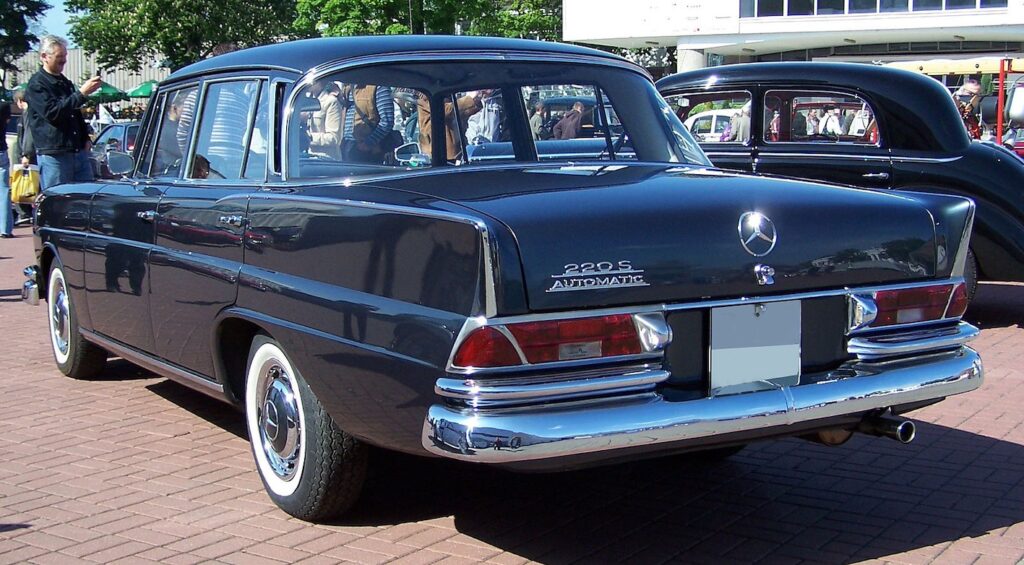


若きデザイナーたちへ
スケッチ→レンダリング→スケールモデル→フルサイズドローイング→フルスケールモデルと言うカーデザインの方程式を確立したのもこの時期のデトロイトBIG-3でしたが、タイムマシンがあるなら、この時期のデトロイトのスタジオを一度覗いてみたいと思います。きっと活気に溢れていたことでしょう。
今や、そのデザインの手段もデジタル技術の発展に伴い、スケッチのデジタル化、モデリングのデジタル化が進み、デザインの開発スピードも画期的に速くなりました。 またネットワークのデジタル化は今、ここで発信された情報が数秒後には世界中のほとんどの場所で共有できるというかつてのミラクルが現実のものとなっています。今後活躍するデザイナー達が過多な情報に振り回されず、しっかりと自己の判断力を養って新しい自らのデザインを生み出してくれることを期待しています。
The Road to Car Designer Vol.1 – [ SHIKADO’s COLUMN ]
At the start of the serialization
As you can see from my profile, I have been an automotive designer for almost 40 years, about half of which, 20 years, were spent in design studios in the United States.
However, as a retired person, it is difficult for me to provide “FRESH” information about the car design world, so I would like to write in this column in several parts about the historical transition of the car design world and how I became a car designer. I hope this column will be helpful to readers who are thinking of venturing into the world of automotive and product design.
Vol.1The Beginning of Car Styling
The first installment is about the influence of the tailfins that emerged in the United States on the world of car design.
There are many theories about the origins of the automobile, but the 1908 Model T-Ford can be said to be the beginning of the mass-produced automobile.
Where does car styling originate? Of course, there are many theories, but if we assume that car styling is the process of determining the size and shape of a mass-produced car at the planning and design stages, then the first to establish this system was the “BIG-3” in the United States in the late 1950s and 1960s.
After World War II, the U.S. economy gradually recovered, and the U.S., with its large land area and roads, provided an ideal environment for the development of mass-produced cars. In the 1950s, mass production technology was established in U.S. factories, and robust and durable body shapes were produced.


Appearance of Tail Fins
In 1951, GM introduced a concept car, the Buick Lusable, in an attempt to find new value in car styling. The design elements of this car had a major influence on the styling of not only GM cars, but also American cars in later years.
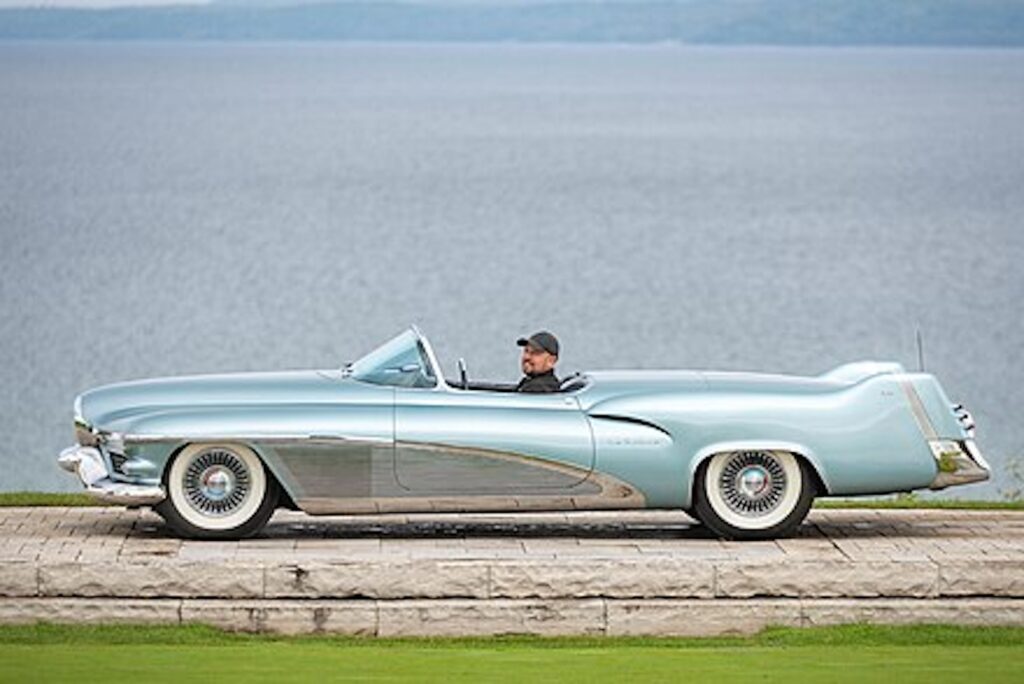
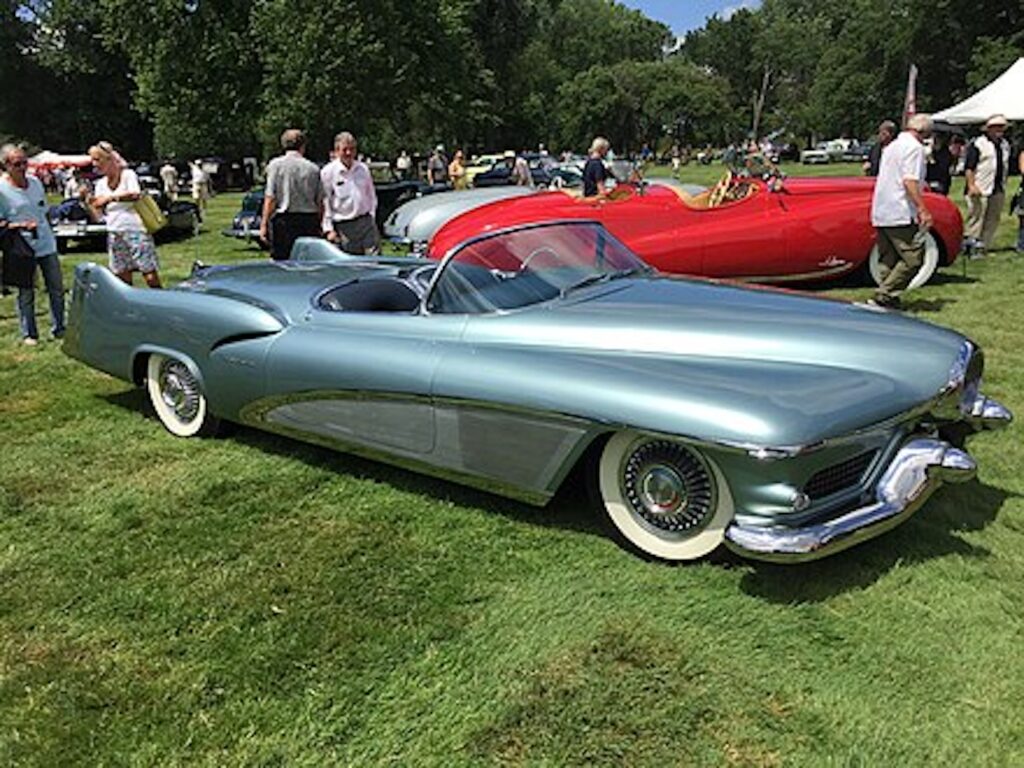
According to the explanation of GM’s VP of Design at the time, Harley Earl, the tail fins inspired by the pair of vertical tail fins of the U.S. military aircraft P38-Lightning were incorporated into the styling of the car. The “styling” of the car was groundbreaking, not for its physical effect of reducing air resistance, but for its image of gliding smoothly over the road like an airplane. The “tail fin” was the first step in car styling. The 1959 GM Cadillac Eldorado was synonymous with tailfins as a mass-produced car.


Ford and Chrysler cars of the same period were also designed with tail fins.


Furthermore, as a development of the tail fin, the characteristic shape around the rear of the ’59 Chevloret Impara is a unique and graceful form that will remain in the history of car styling.

Influence on Japanese cars and European cars
In he 1950s, U.S. cars were considerably larger than their European counterparts, but in this era of tailfins, they became even longer and wider, with an overall length of 5.7 m and an overall width of over 2.0 m. This was another design element suitable for the U.S. market. This was another design element suitable for the U.S. market.
In the 1950s and 1960s, Japan was at the dawn of motorization, and it was a far cry from the days when every household had its own car. In addition, there were far more non-paved roads than paved ones.Because of these road conditions, Japanese cars were generally small, and even the largest passenger car, the Crown (TOYOTA), was quite small, with an overall length of 4.4 m and an overall width of 1.7 m. Even so, some of them were greatly influenced by the design trends of American cars of the time.



The styling and presence of the Cadillac and Thunderbird, the rare American cars seen on the streets among these small domestic cars, had an immeasurable impact on me when I was only about 10 years old.
Europe was ahead of the U.S. in terms of mass production of automobiles, and its body design has taken a steady course based on the brand image of each company,However, it is not true to say that there were no tail fins in the 1950s and 1960s. Even Mercedes modestly incorporated tailfins into its design.



Thoughts for Young Designers
It was during this period that the Detroit BIG-3 established the formula for car design: sketch → rendering →scale model → full-size drawing → full-size model. It must have been full of vitality.
Nowadays, with the development of digital technology, sketches are digitized, modeling is digitized, and the speed of design development has dramatically accelerated. In addition, the digitalization of networks has now made a reality the former miracle that information transmitted here can be shared almost anywhere in the world in a few seconds.
I hope that the designers who will be active in the future will not be swamped by an overabundance of information, but will instead develop their own judgment and create new designs of their own.

![by Car Styling [カースタイリング]](https://motor-fan.jp/wp-content/uploads/2025/04/carstyling-jp_logo.png)




















